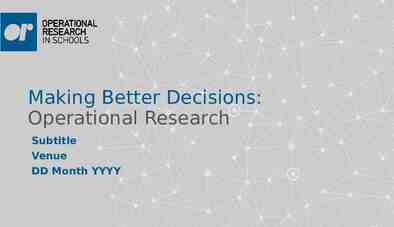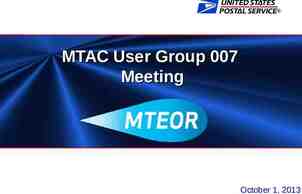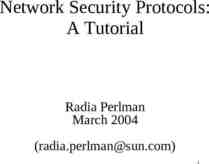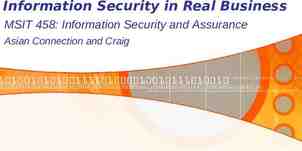Remote ID Cohort Technical Interchange Meeting #1 February 26-27, 2020
62 Slides4.38 MB

Remote ID Cohort Technical Interchange Meeting #1 February 26-27, 2020

Remote ID TIM Agenda – Day 1 Welcome & Agenda Overview Introduction of all participants Expectations and Ground Rules Meeting Schedule Scope Concept of Use Review Overview of Remote ID Data Exchange (RIDEx) 12:00 – 1:00 PM : Lunch Topic: Baseline Streams February 26-27, 2020 RID FAA-Industry TIM Federal Aviation Administration 2

Remote ID TIM Agenda – Day 2 Topic: Authorizations & Authentication Topic: Service Monitoring & Analytics Topic: Public Data Sharing 12:00 – 1:00 PM: Lunch Topic: Reliability Other USS Rules Wrap Up February 26-27, 2020 RID FAA-Industry TIM Federal Aviation Administration 3

Program Introduction February 26-27, 2020 RID FAA-Industry TIM Federal Aviation Administration 4

Intro and Welcome Welcome Why are we here? – – How will this work? – – – What you can expect to hear from us How you can participate – expectation of connected system later in the year Rules that govern the USS will be issued in May timeframe with the expectation of design onboarding in late Fall CY20 Operating Norms – – – Context for Cohort and TIM What we know and don’t know Guidelines for the Cohort – Not Federal Advisory Committee Meeting (FACA); Not consensus making body – All ideas will be considered Operating norm – Express design and architecture ideas in the cohort and we will address as needed Operating Tempo – – – Monthly meetings Locations Overall Schedule and expectations to participate February 26-27, 2020 RID FAA-Industry TIM Federal Aviation Administration 5

Cohort Members – Please Introduce Yourselves! What does your organization do? Who are your representatives? What is your anticipated role in Remote ID? What does your organization expect to get out of cohort involvement? February 26-27, 2020 RID FAA-Industry TIM Federal Aviation Administration 6

Concept of Use Review for the Cohort February 26-27, 2020 RID FAA-Industry TIM Federal Aviation Administration 7

Remote ID Intermediaries (ConUse) Focus of Cohort: Network Remote ID Data Exchange (RIDEx) Wireless Provider Internet Provider Remote ID USS FAA Systems Other Gov’t Systems Authorized Government and Public Safety Users (wired GCS possible) Other Commercial Services Related to Cohort February 26-27, 2020 RID FAA-Industry TIM General Public Users Federal Aviation Administration 8

Scenarios (Section 6) Parts of the scenarios involve RIDEx capabilities: – Network Remote ID via USS – Remote ID capability in the near term – Failover / roaming Not all points relate to RIDEx: – Broadcast – Public access – Government use of data Scenario 6.1 applies through “Bravo” Scenario 6.2 only the first paragraph is relevant to RIDEx (Read through relevant parts of scenarios & discuss) February 26-27, 2020 RID FAA-Industry TIM Federal Aviation Administration 9

RID Networking (5.4) Network Remote ID is Internet-Based USS must offer services on the internet FAA is flexible on other details of UAS networking (Use existing mobile data plan? Special hardware/plans? etc.) “Phone on a controller” seems like the likely first configuration “Phone on a drone” could also work within RIDEx v1 February 26-27, 2020 RID FAA-Industry TIM Federal Aviation Administration 10

Data Exchanges (5.7): USS-FAA RIDEx 2020 Baseline Streams and minimal monitoring only Major USS-FAA characteristics: FAA cloud infrastructure hosting Remote ID services Online USS systems Industry-standard, secure interfaces 24/7 availability with backups and redundancies Automation of nominal processes Authentication and credentials administered by the FAA Baseline Streams rationale: The FAA (and other government users) may not need every message, especially not redundant ones. Excessive bandwidth use is inefficient for systems on both sides. The USS can store messages for later retrieval if needed. A certain degree of near-real-time data is necessary for situational awareness. Data transfer requirements will be driven not only by the FAA, but also by other government stakeholders downstream of the FAA. February 26-27, 2020 RID FAA-Industry TIM Federal Aviation Administration 11

Data Exchanges (5.7): USS-USS FAA does not have a direct need for USS-USS communication However, RIDEx could provide USS-USS authentication Is this useful to USSs? February 26-27, 2020 RID FAA-Industry TIM Federal Aviation Administration 12

Key Take-Aways from ConUse The purpose of Remote ID is supplying necessary data to security partners. not Air Traffic, different from LAANC FAA is designated regulator for airspace. needs appropriate systems, data, and processes to conduct its mandated role Network Remote ID is a foundational mechanism in the Remote ID concept February 26-27, 2020 RID FAA-Industry TIM Federal Aviation Administration 13

Network Remote ID Data Exchange (RIDEx) 2020: Introduction for the Cohort February 26-27, 2020 RID FAA-Industry TIM Federal Aviation Administration 14

RIDEx 2020 Objectives & Outcomes Establish minimum level of common operational picture over the Remote ID network capability. Complete by end of 2020. Establish Remote ID USSs. Fundamentals such as: operator access data logging service monitoring Support service availability to UAS of 99.9%. February 26-27, 2020 RID FAA-Industry TIM Federal Aviation Administration 15

Overall RIDEx 2020 Schedule RID Data Exchange (RIDEx) v1 Operation 12/16/2020 First Industry Cohort TIM 2/26/20 Jan 2020 Jan 2021 RID CONUSE Jan 2022 Jan 2023 RID new Use Cases Select RID Cohort Monthly Industry Cohort TIMs MOA Development USS Performance Rules FAA RID Reqts. USS RID Dev RID Dev Test OB Procedure Onboarding Complete USS OB RIDEx v1 February 26-27, 2020 RID FAA-Industry TIM RIDEx v2 Federal Aviation Administration RIDEx v3 16

RIDEx 2020 Scope 1. 2. 3. 4. Basic Secure Connections between USS and FAA (A&A) Initial Data Models Baseline Streams Basic Monitoring & Analytics between USS and FAA February 26-27, 2020 RID FAA-Industry TIM Federal Aviation Administration 17

Operational Context C2 USS February 26-27, 2020 net r e t n ile I b o M RID FAA-Industry TIM Internet FAA RIDEx Architecture Federal Aviation Administration 18

RIDEx Architecture Foundational Pillars Pillar Objective/Reason How Operational Excellence To run and monitor systems to deliver business value and to continually improve supporting processes and procedures Security To protect information, systems, and assets while delivering business value through risk assessments and mitigation strategies To be able to recover from infrastructure or service disruptions, dynamically acquire computing resources to meet demand, and mitigate any disruptions (i.e. misconfigurations or transient network issues) To use computing resources efficiently to meet system requirements and to maintain that efficiency as demand changes and technologies evolve Logging capabilities Monitoring capabilities Change management processes Network security measures Application access (MFA AuthN/AuthZ/) Data security(data in-transit and data at-rest) USS Failover Soft dependency on FAA Efficient, simple protocols Modern computing design Reliability Performance Efficiency February 26-27, 2020 RID FAA-Industry TIM Federal Aviation Administration 19

RIDEx Architecture Application Pillars Pillar Objective/Reason How Composability To allow ease of composing and connecting application components in order building higher-level services. Flexibility To decouple USS and FAA (system-tosystem) and to allow configuration driven design and agnostic implementation Employing modern API-driven, standard-based integration protocol between USS and FAA Establishing loose coupled design with standard based design of the Contract/Interface Programmability To utilize API-first approach to provisioning, deployment, and management Central focus is on USS-FAA API Containerizing application components and achieving ease of portability, scalability and deployment Frictionlessness To hide the complexity and detail of infrastructure and operations from the application layer February 26-27, 2020 RID FAA-Industry TIM Federal Aviation Administration 20

Data Exchanges (with Context) RIDEx Ar ch itecture Login UAS #1 A& A RID Msgs USS X Baseline Streams Future / Out of 2 020 Scop e Monitor ing & An alytics UAS #2 FAA Direct USS-USS Failover (“roaming”) UAS #3 USS Y February 26-27, 2020 RID FAA-Industry TIM Public Data Function Federal Aviation Administration 21

Elements of RIDEx Data Model Topic: Baseline Streams Baseline Messages Controller location Drone Location (if available) Serial Number Date/Timestamp Emergency Status Topic: Service Monitoring & Analytics Status Up/Down Status Codes Analytics February 26-27, 2020 RID FAA-Industry TIM # Unique UAS (for example) . Federal Aviation Administration 22

Application of Scenario to RIDEx Alpha USS connects to FAA (A&A) Patty Pilot powers up drone – connects to Alpha Patty takes off – first RID message to FAA (Baseline Stream) Patty continues to fly, generating messages (Baseline Stream) Patty lands – last RID message to FAA (Baseline Stream) Patty powers down drone – disconnects from Alpha FAA checks Alpha’s system (Service Monitoring & Analytics) Alpha checks FAA’s system (Service Monitoring & Analytics) Alpha renews connection to FAA (A&A) February 26-27, 2020 RID FAA-Industry TIM Federal Aviation Administration 23

Additional Functions Standard for Public Data Function Part of 2020 objectives As regulator, FAA needs comprehensive and dedicated information streams (RIDEx) FAA is supportive of standards as a means of public network Remote ID information sharing February 26-27, 2020 RID FAA-Industry TIM Federal Aviation Administration 24

Additional Functions FAA Correlation Functions In parallel with Cohort activities, FAA has a role correlating Remote ID information with other government-held information (registrations, authorizations) Correlation functions will be bounded by regulations for use of information Correlated information is not intended for distribution outside approved government uses February 26-27, 2020 RID FAA-Industry TIM Federal Aviation Administration 25

Baseline Streams February 26-27, 2020 RID FAA-Industry TIM Federal Aviation Administration 26

Baseline Streams The concept of the baseline stream is to give the FAA initial minimal information on each operation. This is the simplest way to provide a common operational picture between USS and FAA FAA is single point of aggregation for government uses The baseline stream will be much smaller than the full stream of messages from the UAS to the USS February 26-27, 2020 RID FAA-Industry TIM Federal Aviation Administration 27

Baseline Stream: Scenario Summary Patty’s UAS takes off. Immediately upon detecting takeoff, the UAS begins transmitting Remote ID messages to Alpha. Upon receiving the first report, Alpha begins a baseline stream of messages to the FAA. The first message is immediately forwarded to the FAA. At times, Patty flies quickly from place to place, and other times, hovers. When moving quickly, Alpha forwards a message to the baseline stream every time the position (since the last message) has changed more than 100’ (configurable). When Patty hovers for long periods, the baseline stream rate slows to once per minute. When Patty lands, Alpha gets an indication of it, and sends the FAA the last baseline stream message. Alpha also indicates to the FAA that the flight has landed. February 26-27, 2020 RID FAA-Industry TIM Federal Aviation Administration 28

Baseline Stream: High-Level Requirements USSs send a reduced set of UAS Remote ID messages to the FAA. Baseline stream happens by default any time a UAS operation occurs. Baseline stream is configurable (at the program level). E.g. USSs could be asked to change the period between baseline stream messages. The USS may or may not get confirmation of receipt. Remote ID messages must be secured to ensure that they come from an authorized USS and are not tampered in transit. Note: see A&A section. February 26-27, 2020 RID FAA-Industry TIM Federal Aviation Administration 29

Baseline Stream: USS Rules Applicability – Reports shall be provided for every connected UAS being serviced by the USS between takeoff and landing Frequency – USS shall provide at least 1 report / minute to the FAA for every connected UAS Latency – Time of Applicability of RID reports sent to FAA must not exceed 3 sec (includes maximum latency of RID message and latency of RID report creation and transmission) Encryption – Use of industry standard encryption method Messages must be valid per ICD – USS must generate message, and FAA may verify correctness February 26-27, 2020 RID FAA-Industry TIM Federal Aviation Administration 30

Baseline Stream: USS Rules (Data Retention) Retention – USS must retain UAS data transmitted to FAA for all operations for a period of 6 months – USS must make RID records available to FAA upon request February 26-27, 2020 RID FAA-Industry TIM Federal Aviation Administration 31

Baseline Streams: Data Model Data Item Description Serial Number Unique Identifier for the UAS Control Station Location Latitude, Longitude, Barometric Altitude Aircraft Location (if available) Latitude, Longitude, Barometric Altitude Date/Timestamp UTC, corresponding to location data Emergency Status Identifies special flight situations February 26-27, 2020 RID FAA-Industry TIM Federal Aviation Administration 32

Data Exchange Architecture: Baseline Stream Who is communicating with whom? Who initiates? Does the sender need confirmation of receipt? Does the data need guaranteed delivery? Does lost data need to be recovered? How much data (bandwidth)? Frequency? Reliability, availability, security? February 26-27, 2020 RID FAA-Industry TIM Federal Aviation Administration 33

Authorization & Authentication February 26-27, 2020 RID FAA-Industry TIM Federal Aviation Administration 34

Authentication & Authorization Leverage best practices Basis for trusted Remote ID messages from USSs Also could provide basis for USS-USS communication Notionally FAA can provide high-reliability A&A services (within constraints) February 26-27, 2020 RID FAA-Industry TIM Federal Aviation Administration 35

A&A: Scenario Summary Patty’s USS, “Alpha Inc.”, must authenticate and authorize to connect to the FAA. Alpha provides credentials and is given access to the FAA side of RIDEx. Access is not indefinite – credentials need to be re-submitted periodically. For consideration: Since Alpha must provide baseline streams at any time with no prior warning, it should maintain a continuous connection to the FAA? February 26-27, 2020 RID FAA-Industry TIM Federal Aviation Administration 36

A&A: High-Level Requirements The FAA must authenticate a USS before accepting RID messages. Authentication must be renewed periodically. February 26-27, 2020 RID FAA-Industry TIM Federal Aviation Administration 37

A&A: USS Rules USS must follow A&A specification in ICD. Discussion: USSs may use FAA to authenticate (verify identity of) other USSs? February 26-27, 2020 RID FAA-Industry TIM Federal Aviation Administration 38

A&A: Data Exchange Architecture Who is communicating with whom? Who initiates? Does the sender need confirmation of receipt? Does the data need guaranteed delivery? Does lost data need to be recovered? How much data (bandwidth)? Frequency? Reliability, availability, security? February 26-27, 2020 RID FAA-Industry TIM Federal Aviation Administration 39

Service Monitoring & Analytics February 26-27, 2020 RID FAA-Industry TIM Federal Aviation Administration 40

Service Monitoring & Analytics (SM&A) Resilient capability calls for shared system awareness. Automated status and analytics are bi-directional between USS and FAA. Data logging and access is required for process monitoring. Note: automated SM&A only touches a small portion of logged data. February 26-27, 2020 RID FAA-Industry TIM Federal Aviation Administration 41

SM&A: Scenario Summary Both the FAA and the USS could have concerns that the other side is functioning and healthy. The FAA calls the USS periodically to check for operational status (determined automatically) and basic operational statistics. In this case, the FAA calls Alpha for health status every minute (configurable) and operational statistics every hour (configurable). Alpha does the same checks on the FAA. February 26-27, 2020 RID FAA-Industry TIM Federal Aviation Administration 42

SM&A: High-Level Requirements The FAA can determine if the USS is functioning normally. The USS can determine if the FAA is functioning normally. The FAA can retrieve analytics from the USS for comparison to its own records. The USS can retrieve analytics from the FAA for comparison to its own records. February 26-27, 2020 RID FAA-Industry TIM Federal Aviation Administration 43

SM&A: USS Rules Service Status – USS must expose a system monitoring API to the FAA that provides service status indicators Data Logging – USS must log all RID data (policy, only status/analytics in API) Analytics – USS must expose an operations analytics API to the FAA that provides operations information for the requested time period Reporting – USS must report service outages (planned and unplanned) to the FAA February 26-27, 2020 RID FAA-Industry TIM Federal Aviation Administration 44

SM&A: Data Model Status Data Item Description System Status Up/Down Error Codes / Descriptions Diagnostic information Analytics Data Item Description UAS Counts Number of UAS exchanged in past 24hrs (for example) Message Counts Number of messages in the past 24hrs (for example) February 26-27, 2020 RID FAA-Industry TIM Federal Aviation Administration 45

SM&A: Data Exchange Architecture Who is communicating with whom? Who initiates? Does the sender need confirmation of receipt? Does lost data need to be recovered? How much data (bandwidth)? Frequency? Reliability, availability, security? February 26-27, 2020 RID FAA-Industry TIM Federal Aviation Administration 46

RIDEx v1 Reliability February 26-27, 2020 RID FAA-Industry TIM Federal Aviation Administration 47

Reliability (Intermittent Connection): Scenario Summary Charlie loses connection while flying in a rural area due to limited mobile internet coverage. Bravo identifies a lost connection. Charlie realizes he has lost connection and must land his UAS safely as soon as practicable (limited drone / no broadcast). If the connection is restored before Charlie’s UAS lands, the operation can continue. February 26-27, 2020 RID FAA-Industry TIM Federal Aviation Administration 48

Reliability (USS Outage): Scenario Summary Patty loses connection while flying because Alpha’s servers have an outage. Patty’s UAS attempts to login and connect to an alternate USS, Bravo, after determining that Alpha out of service. If the connection to Bravo is successful, the operation continues without interruption (If the connection to Bravo is unsuccessful, Patty can continue to fly based on broadcast). February 26-27, 2020 RID FAA-Industry TIM Federal Aviation Administration 49

Reliability (Anti-spoofing): Scenario Summary A hacker pretends to be a drone and fools Alpha’s servers and injects false RID messages into Alpha Alpha identifies spoofed targets and does not process them as valid UAS RID information February 26-27, 2020 RID FAA-Industry TIM Federal Aviation Administration 50

Reliability: High-Level Requirements The Network Remote ID capability must be tolerant to intermittent connections. The Network Remote ID capability must be tolerant to individual USS outages. The Network Remote ID capability must be tolerant to FAA system outages. The Network Remote ID capability must protect against false UAS reports. February 26-27, 2020 RID FAA-Industry TIM Federal Aviation Administration 51

Reliability: USS Rules Intermittent Connections – If a RID connection is restored with for the same UAS before landing (i.e. RID messages are received according to required performance tolerances), the USS must resume sending RID reports to the FAA USS/FAA Outages (for discussion) – USS availability must align with RID availability 0.999 – If USS experiences an outage, the USS must provide an automatic failover to another RID USS – If USS does not receive a response from the FAA (i.e. FAA outage), the USS may continue to send RID reports for connected UAS. February 26-27, 2020 RID FAA-Industry TIM Federal Aviation Administration 52

Reliability: USS Rules Anti-spoofing – USS must incorporate a mechanism to detect and mitigated against false targets (i.e. some level of UAS / user validation) – USS must ensure that no unique UAS serial number is being received by more than one connected UAS – Serial number of a connected drone should not change during a connected session – USS must send validated RID messages to the FAA February 26-27, 2020 RID FAA-Industry TIM Federal Aviation Administration 53

Public RID Information February 26-27, 2020 RID FAA-Industry TIM Federal Aviation Administration 54

Public RID Information: Scenario Summary Joe sees a UAS flying near his house and would like to learn more information on it He opens a commercial service on his smartphone and sees general operating information for the UAS, which is updated regularly as the aircraft moves He also sees information for other UAS in the vicinity through the same service February 26-27, 2020 RID FAA-Industry TIM Federal Aviation Administration 55

Public RID Information: High-Level Requirements The public needs a mechanism for obtaining RID messages for situational awareness of drone activity. February 26-27, 2020 RID FAA-Industry TIM Federal Aviation Administration 56

Public RID Information: USS Rules USSs must make RID information available to the public for situational awareness and commercial services February 26-27, 2020 RID FAA-Industry TIM Federal Aviation Administration 57

Public RID Information: Data Model Note: FAA is not involved in sending or receiving this data. Data Item Description Serial Number Unique Identifier for the UAS Control Station Location Latitude, Longitude, Barometric Altitude Aircraft Location (if available) Latitude, Longitude, Barometric Altitude Date/Timestamp UTC, corresponding to location data Emergency Status Identifies special flight situations February 26-27, 2020 RID FAA-Industry TIM Federal Aviation Administration 58

Other RID USS Performance Rules February 26-27, 2020 RID FAA-Industry TIM Federal Aviation Administration 59

Other – Access/Accounts & Data Sources Accounts & Identification – USSs must manage operator accounts using reasonably secure identification methods – USSs must make a capability statement availability to operators upon account creation and login – USSs must notify operators that of the FAA privacy statement February 26-27, 2020 RID FAA-Industry TIM Federal Aviation Administration 60

Wrap Up February 26-27, 2020 RID FAA-Industry TIM Federal Aviation Administration 61

TIM Schedule March 24-25 April 28-29 May 27-28 June 23-24 July 28-29 February 26-27, 2020 RID FAA-Industry TIM August 25-26 September 29-30 October 27-28 November 23-24 December 16-17 Federal Aviation Administration 62






